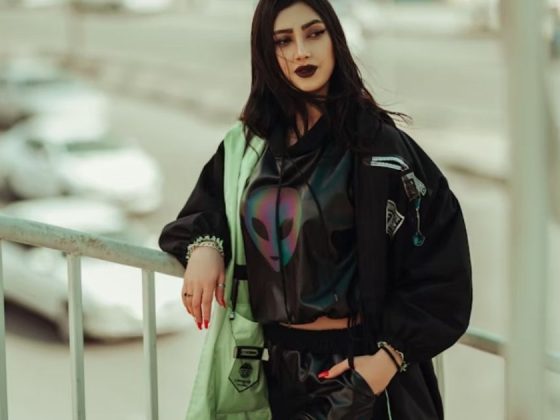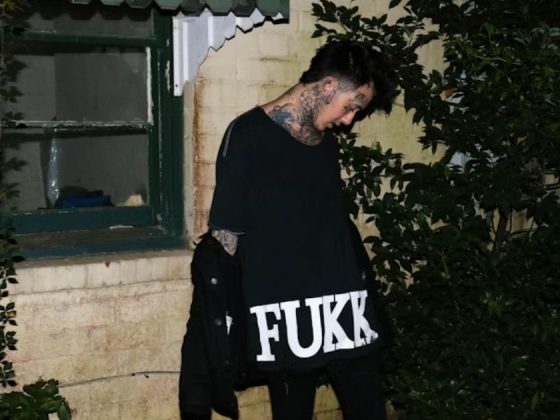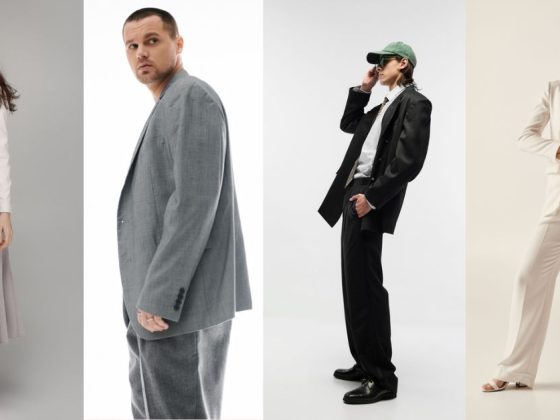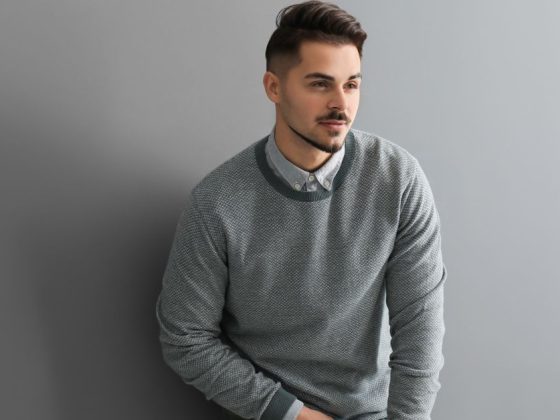Shoes have always walked the fine line between form and function, but in 2025, that line has been blurred, bedazzled, and turned into a catwalk. Today’s shoe trends aren’t just about looking cool or staying comfy—they’re cultural artifacts, wearable tech, and even tools for self-discovery. From adaptive laces to nostalgic Velcro fastenings and barely-there soles, the most significant movements in footwear are proof that shoes now speak louder than ever.
Let’s dig into the fashion world’s three big trend waves making noise (and footprints) this year.
3 Shoe Trends That Define 2025 Style
Laced Shoes
Laced sneakers remain a classic, but they’ve never been this complex or this intelligent. The newest generation of lace-up shoes is practically sci-fi. Brands like Nike and Puma are exploring innovative lacing systems powered by apps or motion sensors. These adaptive laces tighten or loosen based on activity, foot swelling, or mood presets. That’s right—your shoes can sense when you’re in “relax” mode and adjust accordingly. Some even remember your preferred tension levels like a digital shoelace butler.
In the style department, designers embrace louder, prouder aesthetics—oversized tongues, wraparound soles, and color palettes straight out of an AI-generated dream. Expect shades like hyper-cobalt, glitch-pink, and acid-lime to rule the streets. And for those who lean more eco than ego, major brands offer lace options made from recycled fishing nets, cactus leather, and grape skin waste—no joke.
Nostalgia also plays a key role, with Y2K basketball styles, ’90s skate labels, and vintage running silhouettes making a comeback revived with futuristic updates. Laced sneakers now serve as a fusion point where retro heritage meets modern innovation, blending past and future in every step.
Velcro
Velcro, once associated with childhood ease, is now undergoing a bold reinvention within the fashion industry. Long dismissed as overly simplistic, the hook-and-loop fastener now commands attention as a design-forward element. Fashion’s cyclical nature has positioned Velcro as a defining feature in contemporary footwear, offering both nostalgic appeal and modern utility.
Design experimentation with Velcro has expanded across the industry, from independent brands to global fashion houses, including Adidas and Prada. Recent footwear collections feature chunky sandals with layered holographic straps, high-top sneakers incorporating geometric Velcro closures, and hybrid dress shoes designed with hidden fastenings beneath minimalist exteriors. This design approach balances irony and utility, appealing to various aesthetics and generations.
The resurgence of Velcro aligns with a broader movement toward modularity in contemporary fashion. Emphasis on adaptability, customization, and dynamic styling is increasingly reflected in garments and accessories. Velcro-enhanced footwear embraces this shift through interchangeable elements such as badges, decorative patches, and even scent diffusers, offering new avenues for personalization. In this climate of wearable reinvention, Velcro has reemerged as a tactile and transformative component, ideally suited for the era of remixable fashion.
Barefoot Shoes
At the minimalist end of the footwear spectrum, barefoot shoes offer a subtle yet striking counterpoint to the dominance of chunky soles and tech-enhanced designs. This trend reflects a quiet rebellion—an embrace of simplicity that prioritizes sensory awareness and grounded movement over traditional cushioning and support.
Engineered with minimal intervention, barefoot shoes feature ultra-thin soles that maintain protection while allowing for natural foot engagement. The design philosophy emphasizes muscle strengthening, posture improvement, and a closer connection to the walking surface—an approach often likened to mindfulness through motion.
Far from their outdated, utilitarian origins, modern barefoot styles reflect a refined aesthetic. Offerings include urban slip-ons crafted from charcoal wool, desert-inspired hikers made with Merino mesh, and sculptural sandals with architectural profiles. These designs align seamlessly with tailored wardrobes and casual attire, delivering understated sophistication with functional intent.
The movement draws support from scientific research highlighting the benefits of natural foot mechanics. As awareness grows, barefoot footwear is gaining traction beyond athletic use, emerging as a practical and stylish choice for daily routines—whether navigating city streets, traveling, or visiting cultural spaces.”””don’t don’t You’ll They’re”
Emerging Sub-Trends Across the Board
Within the big three categories, other exciting micro-trends are emerging:
- Laced shoes with hidden pockets or compartments (hello, festival shoes!)
- Velcro shoes with tech integrations, like NFC tags that store your fitness data or open smart locks
- Barefoot shoes in fashion-forward forms, such as split-toe tabi-inspired designs from brands like Maison Margiela and niche creators in Japan and Berlin
There’s also an increasing crossover between performance and fashion: trail runners in neutral palettes worn with suits, barefoot-style loafers for office wear, and Velcro platform sandals styled with socks and skirts on the streets of Copenhagen and Seoul.
Why These Shoe Trends Matter
Current footwear trends transcend temporary aesthetics or runway-driven impulses, functioning as indicators of broader cultural shifts and evolving priorities within the fashion landscape. Footwear now acts as a symbolic form of communication, capturing changing perspectives on identity, intention, and social consciousness. As fashion increasingly prioritizes function, ethics, and individual values, these developments shift toward deeper narrative and meaning rather than superficial style.
A notable shift has emerged toward personalization in design. Uniform, mass-market approaches give way to footwear that accommodates unique preferences, needs, and experiences. Innovations such as customizable laces, modular Velcro components, and barefoot-inspired construction reflect a wider cultural desire for agency and adaptability. Footwear now serves as an expressive medium, capable of transforming through thermoreactive color shifts or accessory-based personalization, mirroring mood, belief, or aesthetic identity. Beyond coordination with clothing, footwear has become a deliberate extension of individuality and intention.
Then comes the shift toward sustainability and longevity. As climate anxiety grows and consumers become more conscious of fashion’s environmental impact, there’s a visible rejection of fast fashion’s disposability. Today’s trending shoes are designed to last through durable construction, biodegradable components, or circular business models like repairability or upcycling. Barefoot shoes typically use minimal materials and regenerative production methods, supporting sustainability through simple, eco-conscious design. Meanwhile, bright-laced sneakers made from algae foam or recycled ocean plastics show that innovation and sustainability are no longer mutually exclusive.
Accessibility and inclusion have also stepped into the spotlight. Adaptive closures—like zippers, pull tabs, and Velcro—aren’t just design flourishes. They’re deliberate tools for making fashion more inclusive for people with disabilities, older adults, and anyone who struggles with traditional fastenings. Shoe brands recognize that comfort, ease of wear, and functional support aren’t niche needs—they’re universal. From ergonomic soles designed to relieve joint pain to Velcro sandals that provide independence and ease for all ages, footwear is becoming more democratic.
An increasing emphasis on multi-functionality continues to shape footwear design, influenced by the demands of fluid, fast-paced lifestyles. Versatility now stands as a fundamental expectation, leading to footwear capable of transitioning between environments, ranging from rugged trails to metropolitan commutes, from wellness routines to social engagements. This evolution has spotlighted designs that merge adaptability with aesthetics: barefoot sneakers engineered for movement and mindfulness, Velcro platforms bridging streetwear and resort-ready style, and laced hybrids combining all-terrain grip with refined, urban silhouettes. Footwear now operates as a utilitarian tool—purpose-driven, flexible, and designed with sophistication beyond ornamental value.
These patterns reflect a broader shift in fashion’s role. Footwear is no longer a seasonal trend marker but a meaningful extension of principles, preferences, and lived experience. Innovations in innovative technology, retro-inspired constructions, and minimalist frameworks reveal a commitment to thoughtful, expressive design. The industry is advancing toward a new design ethos that prioritizes substance over surface, personal narrative over prestige, and conscious consumption over transient appeal. Rather than simply stepping into new styles, fashion aligns with values, functionality, and authenticity.
Sneaker Culture, Wellness Trends & The “Function as Fashion” Era
A striking thread weaving through this season’s standout footwear trends is the elevation of function from background detail to fashion’s front-runner. This new chapter—dubbed the Function as Fashion era—reimagines shoes as accessories and lifestyle architecture. Every design is engineered to move with intention, support the body, reflect inner values, and deliver all-day performance without sacrificing visual impact. Footwear now lives at the intersection of form and function—aesthetic armor with a purposeful core.
This shift parallels the evolution of sneaker culture. Once a niche collector’s niche in the 1980s, the sneaker landscape has expanded into a global intersection of athletics, streetwear, technology, and visual culture. Sneakers have evolved into cultural signifiers, representing personal identity, collective affiliation, and status within modern fashion and lifestyle realms. Market phenomena such as high-value resale platforms, limited-edition drops, and the emergence of digital sneaker NFTs illustrate a broader movement toward curatorial ownership. Modern sneakers blend fashion with function, combining self-lacing tech and orthopedic features with innovative design.
Simultaneously, the rise of wellness culture has deeply influenced footwear development. The global health crisis reshaped priorities, elevating comfort, physical well-being, and intentional living within personal style narratives. Barefoot-style footwear has gained traction, promoting natural movement, grounding, and alignment. The role of shoes has shifted from a visual accessory to a daily tool for health and self-care. Wellness-focused design is no longer considered niche—it now defines a significant fashion industry sector.
Sustainability has also become foundational. No longer positioned as an optional feature, eco-conscious design is now essential to forward-thinking production. Brands embracing biodegradable soles, circular economy frameworks, and transparent sourcing are leading innovations. Increased demand for accountability has fueled interest in materials such as sugarcane-based foam, algae-derived outsoles, and recycled or plant-based leathers. Labels such as Allbirds, Rothy’s, Veja, and Thousand Fell exemplify this shift, where sustainability and material science are central to ethics and aesthetics. Eco-tech now represents one of the fastest-growing categories within the fashion materials market.
When Shoes Speak Louder Than Words
While trends continue to shift, the evolving relationship between individuals and footwear remains unmistakable. Footwear selection is no longer limited to outfit coordination; choices are increasingly driven by emotion, intention, and personal narrative. From vibrant laces to high-tech Velcro innovations and minimalist barefoot designs, shoes now function as storytellers—signaling past experiences, present values, and future aspirations.
In this landscape, every pair becomes a declaration, whether embedded with adaptive technology, defined by maximalist flair, or grounded in sensory simplicity. Footwear has transcended its utilitarian role, emerging as a wearable reflection of purpose, personality, and progress. None of this season’s boldest statements speaks louder—or more authentically- than what appears on the feet.














